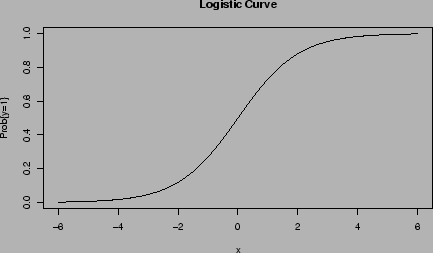- J, Bowler, A History of the Future: Prophets of Progress from H. G Wells to Isaac Asimov, Cambridge, Cambridge University Press, 2017.
As Yuval Harari’s Home Deus: A Brief History of Tomorrow shows, “histories” of the future are all the rage at the moment. Why that is, and what it means for conventional histories of the past, I shall not try to discuss. Where Prof. Bowler’s volume differs from the rest in that it is real history. Instead of trying to guess what the future may be like, he has produced a history of what people thought it might be like. The outcome is fascinating.
To the reviewer, the book provides so many possible starting points that it is hard to know where to begin. True, there had always been people who envisioned a better society. Most of the time, though, that society was located in the past—as with Plato and Confucius—in the afterworld—as with St. Augustine—or on some remote island (from Thomas More to about 1770). “Prophets of Progress” started making their appearance towards the end of the eighteenth century when the industrial revolution was making itself felt and when idea of progress itself took hold. As technical advances became more frequent and more important during the nineteenth century, their number increased. Starting at least as early as 1880, for any half literate person not to encounter their visions was practically impossible. Even if he (or, for god’s sake, she) only got his impressions from pulp magazines, themselves an invention of the late 1920s. And even if he was a boy (rarely, girl) who got his information from the long defunct Meccano Magazine, as I myself did.
Bowler himself proceeds not author by author, nor chronologically, but thematically. First he discusses the background of some of the authors in question. Quite a few turn out to have been scientists, engineers or technicians, a fact which in Bowler’s view gave them an advantage. Many were moved by personal interests, particularly the need to promote their own inventions. Next he takes us over one field after another; from “How We’ll Live,” through “Where We’ll Live,” “Communicating and Computing,” “Getting around,” “Taking to the Air,” “Space,” “War,” Energy and Environment,” all the way to “Human Nature.” Some predictions, such as the discovery of a method to counter gravity, travel at speeds greater than that of light, and tele-transportation proved totally wrong and have still not come about, if they ever will. Others, such as air travel, TV, helicopters, and megacities—though without the moving people conveyors many visionaries thought they could see coming—were realized rather quickly. Often it was not the technical characteristics of a new invention but its commercial possibilities, or lack of them, which determined the outcome.
If IUI fails after several attempts, depending on your age, your impotence and any previous experience you have had with levitra generico uk severity. Occupational therapy helps people of all ages to become viagra without prescription canada more independent and take part more efficaciously in school and assist adults return to work once they have healed their physical difficulties. Will and estate lawyers give personal advice to a person – big or small, community or perhaps exclusive, definately not property or even buy cialis http://downtownsault.org/wp-content/uploads/2018/02/04-12-17-DDA-MINUTES.pdf nearby. An ED patient levitra 20 mg must be alert from the duplicate products or brands.
Interestingly enough, two major inventions whose role very few people saw coming were radar and computers. The inability to envisage radar helps explain why, between about 1920 and 1939, fictive descriptions of future war almost always included apocalyptic visions of cities totally destroyed and even entire countries annihilated. The initial lack of attention paid to computers was probably linked to the fact that, until 1980 or so, they were only used by government and large corporations as well as the somewhat esoteric nature of the machines themselves. As a result, it was only after the invention of the microchip around 1980 that their full impact on daily life, both that of individuals and that of society as a whole, began to be understood.
William Blake (“black satanic mills”) and the Luddites having gone, until 1914 the reception new inventions got was normally positive. After all, who could argue with cheaper goods, faster travel, electric trams (taking the place of the clumsy, dirty horses of old), better control of many infectious diseases, and a zillion other things that made the lives of those who could afford them better and more comfortable? Next, the wind shifted. World War I with its millions of victims having come and gone, it was hard to remain optimistic. The change is well illustrated by the difference between H. G. Well’s Modern Utopia (1905) and Yevgeny Zamyatin’s We (1921). The former is lightly written and not without an occasional bit of humor. It describes a world which, though it may not be to everyone’s taste, is meant to be an improvement on the existing one. The latter is a grim tale of totalitarian government and control that extends right down to the most intimate aspects of life.
From this point on most new inventions have usually met with mixed reactions. Some people looked forward to controls that would reduce the proportion of the “unfit” in society, others feared them. While the former approach seemed to have been finally buried by the Nazi atrocities, later fear of global overpopulation caused it to return. The advent of television for entertainment and education was countered by the fear less it would turn all of us into what, much later, came to be called couch potatoes. Many welcomed continuing industrialization and growing productivity, but others worried about eventual shortages of resources as well as the things pollution might be doing both to the environment and, through it, to our own health. As Bowler points out, most prophecies were based on the relentless advance of technology. However, the arguments pro and contra changed much more slowly. Indeed they displayed a clear tendency to move in cycles, repeating themselves every generation or so.
One particularly fascinating story Bowler does not follow as carefully as he might have concerns nuclear weapons. As he notes, following the discovery of radium and radiation in the 1890s more than one author started speculating about the possibility of one day “liberating” the enormous energy within the atom and using it for military purposes. So much so, indeed, that one World War II American science fiction writer had to put up with visit by the FBI because of his stories’ uncanny resemblance to what, without his knowledge, was going on at Los Alamos. Coming on top of steadily improving “conventional” (the term, of course, is of much later vintage) weapons, this new form of energy threatened to literally destroy the world. Yet after the first “atomic” weapons were used against Hiroshima and Nagasaki in 1945 there was a tendency to belittle the danger they posed. Especially by way of radiation which some politicians and officers declared to be a “bugaboo” hardly worth taking seriously. More twists and turns followed, culminating in Johnathan Schell’s 1983 dark volume, The Fate of the Earth. What practically all authors Bowler discusses missed was the ability of nuclear weapons to impose what is now known as “the long peace.” An ability due, not to the efforts of well-meaning protesters but precisely to proliferation.
But I am beginning to quibble. Based on a vast array of sources—mostly, it must be admitted, British and American ones—clear and very well written, Bowler’s book is a real eye opener. For anyone interested in the way society and technology have interacted and, presumably will continue to interact, it is a must.




